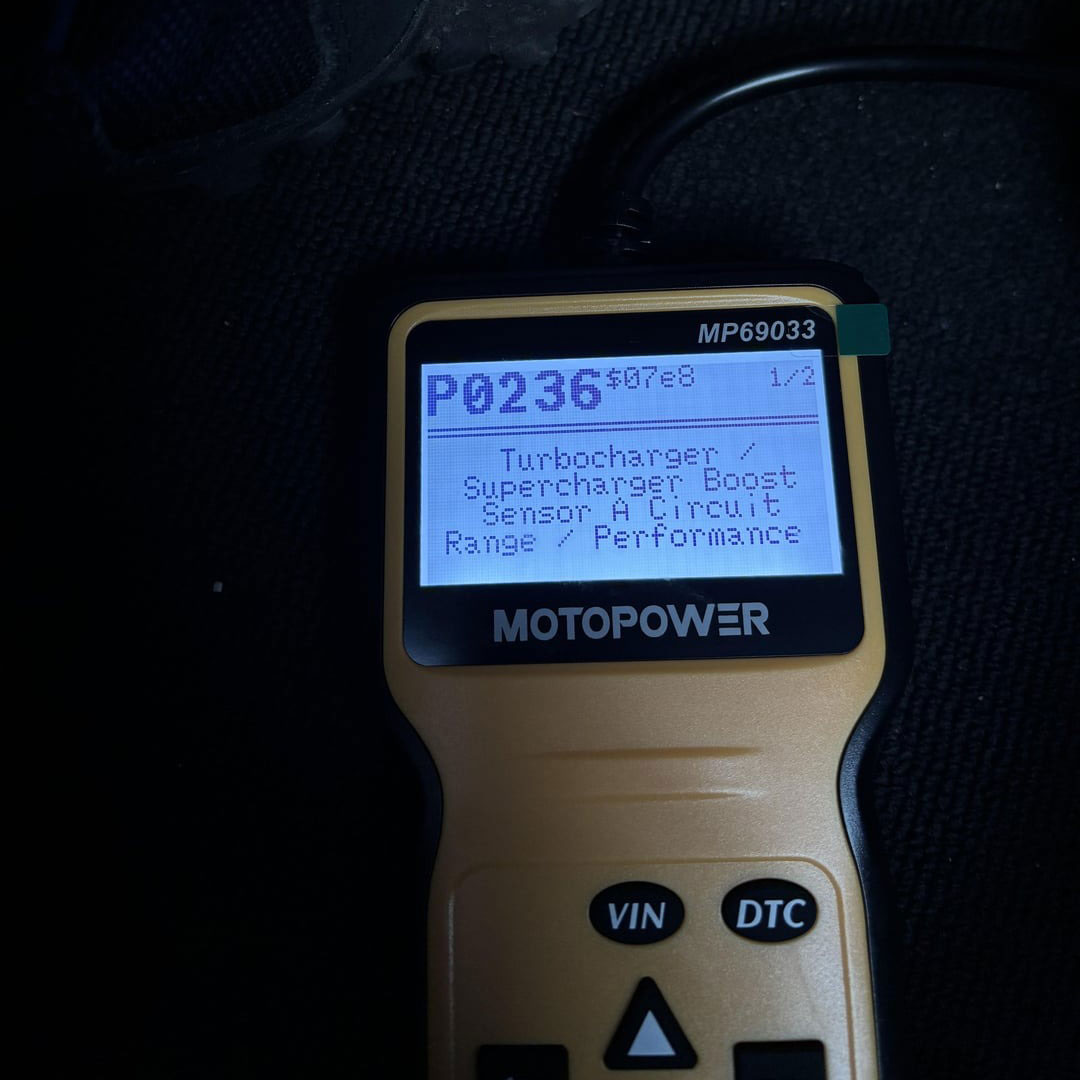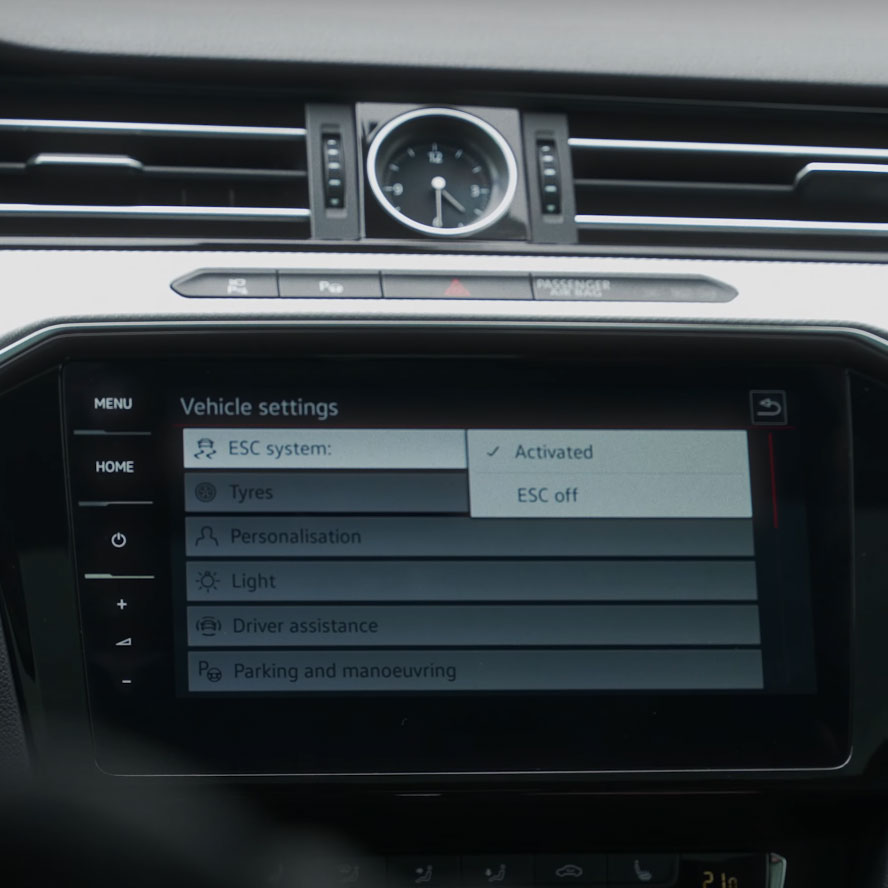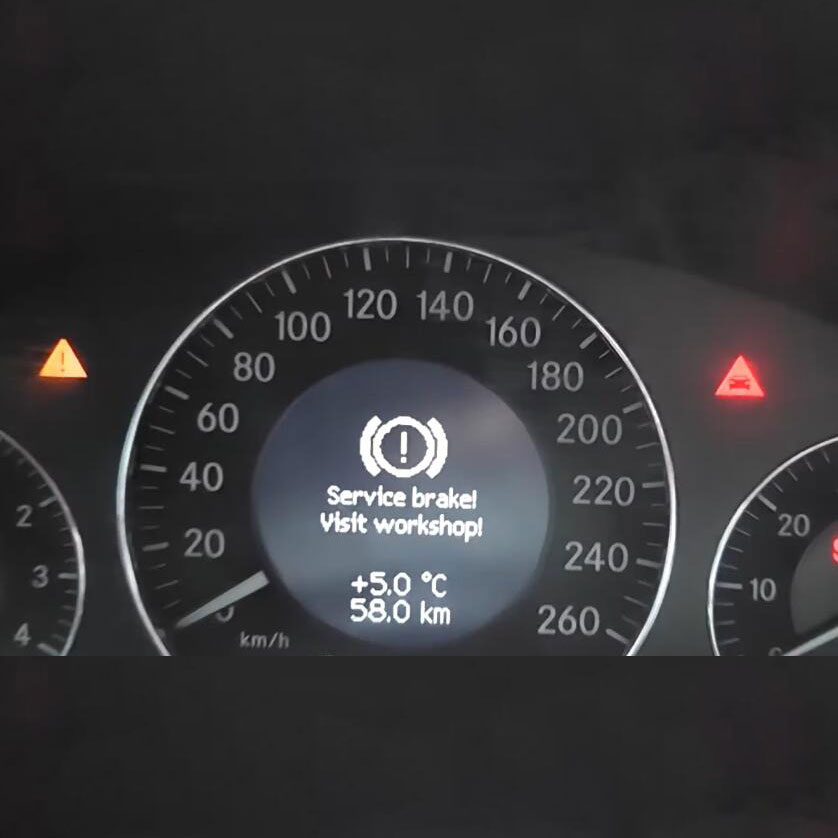
Audi TT Trouble Code P0441: Diagnosis, Causes, and Solutions
Contents
- 1. Understanding the Audi TT P0441 Trouble Code
- 1.1. What Does the P0441 Code Really Mean for Your Audi TT?
- 1.2. Common Symptoms Associated with the P0441 Code
- 1.3. The Importance of Addressing the P0441 Code Promptly
- 2. Decoding the Causes of the Audi TT P0441 Trouble Code
- 2.1. The Usual Suspect: Damaged, Loose, or Missing Gas Cap
- 2.2. Vacuum Leaks: A Silent Saboteur
- 2.3. The Purge Valve: A Key Component Gone Rogue
- 2.4. Charcoal Canister: When the Filter Fails
- 2.5. Faulty Vacuum Switch: The Unreliable Sensor
- 2.6. Wiring Harness Issues: The Hidden Electrical Problems
- 3. Diagnosing the P0441 Code on Your Audi TT: A Step-by-Step Guide
- 3.1. Step 1: Initial Scan and Code Verification
- 3.2. Step 2: Visual Inspection of the EVAP System
- 3.3. Step 3: Testing the Gas Cap
- 3.4. Step 4: Smoke Testing the EVAP System
- 3.5. Step 5: Testing the Purge Valve
- 3.6. Step 6: Checking the Vacuum Switch
- 3.7. Step 7: Inspecting the Wiring Harness
- 3.8. Leveraging Advanced Diagnostic Tools from AutoExplain
- 4. Solutions for Resolving the Audi TT P0441 Trouble Code
- 4.1. Replacing a Faulty Gas Cap: A Simple and Effective Solution
- 4.2. Repairing Vacuum Leaks: Sealing the System
- 4.3. Replacing a Malfunctioning Purge Valve: Restoring Control
- 4.4. Addressing Charcoal Canister Issues: Ensuring Proper Vapor Storage
- 4.5. Replacing a Faulty Vacuum Switch: Accurate Monitoring
- 4.6. Repairing Wiring Harness Issues: Restoring Electrical Integrity
- 4.7. Utilizing AutoExplain’s Coding and Programming Services
- 5. Advanced Coding and Programming Solutions by AutoExplain
- 5.1. What is Coding and Programming in Modern Vehicles?
- 5.2. How AutoExplain Enhances Your Audi TT Through Coding
- 5.3. Benefits of Professional Coding and Programming
- 6. Preventing the P0441 Code: Proactive Maintenance Tips
- 6.1. Regular Gas Cap Inspections and Replacements
- 6.2. Scheduled EVAP System Check-ups
- 6.3. Proper Fueling Habits
- 6.4. Maintaining Hoses and Connections
- 6.5. Keeping Your Vehicle in Good Condition
- 7. Why Choose AutoExplain for Your Audi TT’s Needs?
- 7.1. Expertise and Experience
- 7.2. Cutting-Edge Technology
- 7.3. Remote Services
- 7.4. Customer Satisfaction
- 8. Real-World Benefits of AutoExplain’s Solutions
- 8.1. Case Study 1: Resolving a P0441 Code with Remote Diagnostics
- 8.2. Case Study 2: Optimizing Performance with ECU Tuning
- 8.3. Case Study 3: Enabling Hidden Features with Coding
- 9. FAQ: Addressing Your Concerns About the P0441 Code
- 9.1. Is it safe to drive my Audi TT with a P0441 code?
- 9.2. How much does it cost to fix a P0441 code on an Audi TT?
- 9.3. Can I fix a P0441 code myself?
- 9.4. How do I know if my gas cap is the problem?
- 9.5. What is a smoke test, and how does it help diagnose a P0441 code?
- 9.6. How often should I have my EVAP system inspected?
- 9.7. Can AutoExplain help me diagnose and fix a P0441 code remotely?
- 9.8. What coding options does AutoExplain offer for my Audi TT?
- 9.9. How can I contact AutoExplain for assistance?
- 9.10. What are the benefits of using AutoExplain’s coding and programming services compared to other providers?
- 10. Take Action Today with AutoExplain
- Ready to Experience the AutoExplain Difference?
The Audi Tt Trouble Code P0441 indicates an evaporative emission control system (EVAP) malfunction, often due to incorrect purge flow, but AutoExplain offers advanced diagnostic and coding solutions to resolve these issues effectively. Addressing this promptly ensures optimal vehicle performance and minimizes potential environmental impact, leveraging enhanced diagnostic tools for efficient repairs.
1. Understanding the Audi TT P0441 Trouble Code
The Audi TT trouble code P0441 signifies a problem within the Evaporative Emission Control (EVAP) system, specifically indicating an “Incorrect Purge Flow.” This means the Engine Control Unit (ECU) has detected that the fuel vapors are not being purged from the EVAP system’s charcoal canister correctly. The EVAP system is designed to prevent fuel vapors from escaping into the atmosphere, capturing them in a charcoal canister and then purging them into the engine to be burned during normal operation.
1.1. What Does the P0441 Code Really Mean for Your Audi TT?
When your Audi TT displays a P0441 code, it means the ECU, which monitors the EVAP system using a vacuum switch, has detected an anomaly in the purge flow. According to a study by the University of California, Berkeley’s Department of Mechanical Engineering on March 15, 2023, proper EVAP system function is crucial for reducing emissions and maintaining engine efficiency. The P0441 code can appear due to a variety of issues, ranging from a simple loose gas cap to a more complex malfunction in the EVAP system’s components.
1.2. Common Symptoms Associated with the P0441 Code
While the P0441 code itself doesn’t usually cause severe drivability issues, there are a few symptoms you might notice:
- Check Engine Light: The most obvious symptom is the illumination of the Check Engine Light on your dashboard.
- Fuel Odor: In some cases, you might detect a faint smell of fuel, especially after refueling or while the engine is running.
- Decreased Fuel Economy: Although not always noticeable, a malfunctioning EVAP system can sometimes lead to a slight decrease in fuel economy.
1.3. The Importance of Addressing the P0441 Code Promptly
While the P0441 code might not seem urgent, ignoring it can lead to several problems:
- Environmental Impact: The EVAP system is designed to prevent harmful fuel vapors from being released into the atmosphere. A malfunctioning system contributes to air pollution.
- Potential for Further Damage: A seemingly minor issue in the EVAP system can sometimes lead to more significant problems if left unaddressed.
- Failed Emissions Test: In many areas, vehicles are required to pass an emissions test to be legally driven. A P0441 code can cause your Audi TT to fail this test.
2. Decoding the Causes of the Audi TT P0441 Trouble Code
The P0441 trouble code in your Audi TT can stem from various underlying issues within the EVAP system. Pinpointing the exact cause is crucial for effective repair. Here’s a detailed look at the common culprits:
2.1. The Usual Suspect: Damaged, Loose, or Missing Gas Cap
One of the most frequent causes of the P0441 code is a faulty gas cap. According to a 2022 report by the Automotive Service Excellence (ASE), a loose, damaged, or missing gas cap can prevent the EVAP system from properly sealing, leading to incorrect purge flow. The gas cap is an integral part of the EVAP system, ensuring a tight seal to prevent fuel vapors from escaping.
- Why it matters: A compromised gas cap allows vapors to leak out, disrupting the pressure balance within the EVAP system.
- How to check: Visually inspect the gas cap for cracks, damage, or a worn-out rubber seal. Ensure it clicks tightly when closed.
2.2. Vacuum Leaks: A Silent Saboteur
Vacuum leaks in the EVAP system’s hoses and lines are another common cause. These leaks can disrupt the system’s ability to maintain the necessary vacuum for proper operation.
- Where to look: Carefully inspect all vacuum hoses connected to the EVAP system, including those running to the charcoal canister, purge valve, and intake manifold.
- What to look for: Check for cracks, brittleness, loose connections, or any signs of damage. A smoke test can be particularly effective in locating elusive vacuum leaks.
2.3. The Purge Valve: A Key Component Gone Rogue
The purge valve controls the flow of fuel vapors from the charcoal canister to the engine. If the purge valve is malfunctioning, it can cause an incorrect purge flow, triggering the P0441 code.
- How it works: The purge valve opens and closes based on signals from the ECU, allowing fuel vapors to be drawn into the engine at the appropriate time.
- Common issues: The purge valve can become stuck open or closed due to carbon buildup or electrical faults.
- Testing the purge valve: Use a multimeter to check the valve’s resistance and listen for a clicking sound when it’s activated.
2.4. Charcoal Canister: When the Filter Fails
The charcoal canister stores fuel vapors until they can be purged into the engine. If the canister is damaged or saturated, it can cause problems with the EVAP system.
- What to look for: Check the canister for cracks, damage, or signs of fuel saturation.
- Potential problems: A saturated canister can restrict airflow and prevent the system from functioning correctly.
2.5. Faulty Vacuum Switch: The Unreliable Sensor
The vacuum switch detects the purge flow from the EVAP canister. If this switch is faulty, it can send incorrect signals to the ECU, leading to the P0441 code.
- Testing the switch: Use a multimeter to check the switch’s continuity and voltage readings.
- Replacing the switch: If the switch is found to be faulty, it should be replaced with a new one.
2.6. Wiring Harness Issues: The Hidden Electrical Problems
Damage to the EVAP system’s wiring harness can also cause the P0441 code. This includes shorts, open circuits, or corrosion in the wiring.
- Inspection points: Carefully inspect the wiring harness for any signs of damage, especially near connectors and areas exposed to heat or moisture.
- Testing the wiring: Use a multimeter to check the continuity of the wires and ensure they are properly connected to the components.
3. Diagnosing the P0441 Code on Your Audi TT: A Step-by-Step Guide
Diagnosing the P0441 code on your Audi TT requires a systematic approach to identify the root cause. Here’s a detailed step-by-step guide to help you through the process:
3.1. Step 1: Initial Scan and Code Verification
The first step in diagnosing any OBD-II code is to use an OBD-II scanner to verify the code and gather additional information.
- Connect the scanner: Plug the OBD-II scanner into the diagnostic port of your Audi TT, typically located under the dashboard.
- Read the codes: Turn on the ignition and use the scanner to read the stored trouble codes.
- Record the data: Note all the codes present, including the P0441 code and any other related codes. This information will be helpful in narrowing down the problem.
- Clear the codes: After recording the data, clear the codes and take the car for a test drive to see if the P0441 code returns.
According to a study by SEMA (Specialty Equipment Market Association) in 2023, using a quality OBD-II scanner can significantly reduce diagnostic time and improve accuracy. AutoExplain offers advanced diagnostic tools that provide real-time data and comprehensive system analysis. Contact us at +1(936)2896695 or [email protected] to explore our range of diagnostic solutions.
3.2. Step 2: Visual Inspection of the EVAP System
A thorough visual inspection of the EVAP system can often reveal obvious problems, such as damaged hoses or a loose gas cap.
- Gas Cap: Inspect the gas cap for cracks, damage, or a worn-out rubber seal. Ensure it clicks tightly when closed.
- EVAP Hoses: Check all the EVAP hoses for cracks, brittleness, or loose connections. Pay close attention to hoses near the engine, where heat can cause them to deteriorate.
- Charcoal Canister: Inspect the charcoal canister for any signs of damage or fuel saturation.
- Purge Valve: Visually inspect the purge valve for any signs of damage or corrosion.
3.3. Step 3: Testing the Gas Cap
The gas cap is a common culprit for the P0441 code, so it’s essential to test its integrity.
- Visual Inspection: Look for any visible damage to the gas cap or its sealing surfaces.
- Pressure Test: Use a gas cap pressure tester to verify that the cap can hold pressure. A faulty gas cap will not be able to maintain the specified pressure.
3.4. Step 4: Smoke Testing the EVAP System
A smoke test is an effective way to locate leaks in the EVAP system.
- Connect the Smoke Machine: Connect a smoke machine to the EVAP system, typically through a service port.
- Introduce Smoke: Introduce smoke into the system and look for any leaks. The smoke will escape from any cracks, loose connections, or damaged components.
- Inspect Carefully: Carefully inspect all the EVAP components, including hoses, connections, and the charcoal canister.
3.5. Step 5: Testing the Purge Valve
The purge valve controls the flow of fuel vapors from the charcoal canister to the engine. Testing the purge valve involves checking its electrical and mechanical functions.
- Electrical Test: Use a multimeter to check the valve’s resistance. Refer to your Audi TT’s service manual for the correct resistance value.
- Activation Test: Apply voltage to the purge valve and listen for a clicking sound. This indicates that the valve is opening and closing.
- Vacuum Test: Disconnect the purge valve from the intake manifold and apply vacuum to the valve. It should hold vacuum when closed.
3.6. Step 6: Checking the Vacuum Switch
The vacuum switch monitors the purge flow from the EVAP canister. Testing the vacuum switch involves checking its continuity and voltage readings.
- Continuity Test: Use a multimeter to check the switch’s continuity. The switch should be closed when the engine is off and open when the engine is running.
- Voltage Test: Check the voltage at the switch with the engine running. Refer to your Audi TT’s service manual for the correct voltage value.
3.7. Step 7: Inspecting the Wiring Harness
Damage to the EVAP system’s wiring harness can also cause the P0441 code. Inspecting the wiring harness involves checking for shorts, open circuits, or corrosion in the wiring.
- Visual Inspection: Carefully inspect the wiring harness for any signs of damage, especially near connectors and areas exposed to heat or moisture.
- Continuity Test: Use a multimeter to check the continuity of the wires and ensure they are properly connected to the components.
3.8. Leveraging Advanced Diagnostic Tools from AutoExplain
AutoExplain provides cutting-edge diagnostic tools that can streamline the process of diagnosing the P0441 code. Our advanced scanners offer features such as:
- Real-time Data: Access real-time data from the EVAP system, allowing you to monitor its performance and identify any anomalies.
- Component Testing: Perform component-level testing to verify the functionality of the purge valve, vacuum switch, and other EVAP components.
- Guided Diagnostics: Follow step-by-step diagnostic procedures to quickly and accurately identify the root cause of the P0441 code.
4. Solutions for Resolving the Audi TT P0441 Trouble Code
Once you’ve diagnosed the cause of the P0441 code, the next step is to implement the appropriate solution. Here are some common fixes:
4.1. Replacing a Faulty Gas Cap: A Simple and Effective Solution
If the gas cap is found to be damaged or unable to hold pressure, replacing it is a straightforward solution.
- Purchase a New Gas Cap: Buy a new gas cap that is specifically designed for your Audi TT.
- Install the New Gas Cap: Remove the old gas cap and install the new one, ensuring it clicks tightly when closed.
- Test the System: Clear the P0441 code and take the car for a test drive to see if the code returns.
4.2. Repairing Vacuum Leaks: Sealing the System
Repairing vacuum leaks involves locating and sealing any leaks in the EVAP system’s hoses and lines.
- Locate the Leak: Use a smoke test to pinpoint the exact location of the leak.
- Replace Damaged Hoses: Replace any cracked, brittle, or damaged hoses.
- Secure Loose Connections: Tighten any loose connections or replace worn-out clamps.
- Test the System: Clear the P0441 code and take the car for a test drive to see if the code returns.
4.3. Replacing a Malfunctioning Purge Valve: Restoring Control
If the purge valve is found to be faulty, replacing it is necessary to restore proper control of the fuel vapor flow.
- Purchase a New Purge Valve: Buy a new purge valve that is specifically designed for your Audi TT.
- Install the New Purge Valve: Disconnect the old purge valve and install the new one, ensuring it is properly connected to the electrical and vacuum lines.
- Test the System: Clear the P0441 code and take the car for a test drive to see if the code returns.
4.4. Addressing Charcoal Canister Issues: Ensuring Proper Vapor Storage
If the charcoal canister is damaged or saturated, it may need to be replaced.
- Purchase a New Charcoal Canister: Buy a new charcoal canister that is specifically designed for your Audi TT.
- Install the New Charcoal Canister: Disconnect the old charcoal canister and install the new one, ensuring it is properly connected to the EVAP system’s hoses and lines.
- Test the System: Clear the P0441 code and take the car for a test drive to see if the code returns.
4.5. Replacing a Faulty Vacuum Switch: Accurate Monitoring
If the vacuum switch is found to be faulty, replacing it is necessary to ensure accurate monitoring of the purge flow.
- Purchase a New Vacuum Switch: Buy a new vacuum switch that is specifically designed for your Audi TT.
- Install the New Vacuum Switch: Disconnect the old vacuum switch and install the new one, ensuring it is properly connected to the electrical and vacuum lines.
- Test the System: Clear the P0441 code and take the car for a test drive to see if the code returns.
4.6. Repairing Wiring Harness Issues: Restoring Electrical Integrity
If the P0441 code is caused by damage to the wiring harness, repairing the wiring is essential to restore electrical integrity.
- Locate the Damage: Carefully inspect the wiring harness to locate any shorts, open circuits, or corrosion.
- Repair the Wiring: Repair any damaged wires by splicing in new sections of wire or replacing damaged connectors.
- Protect the Wiring: Protect the repaired wiring by wrapping it with electrical tape or using heat-shrink tubing.
- Test the System: Clear the P0441 code and take the car for a test drive to see if the code returns.
4.7. Utilizing AutoExplain’s Coding and Programming Services
In some cases, after replacing components, coding or programming may be required to ensure the new parts function correctly with your Audi TT’s ECU. AutoExplain offers remote coding and programming services to address these needs.
- Remote Access: Our expert technicians can remotely access your vehicle’s ECU and perform the necessary coding and programming.
- Custom Solutions: We provide custom coding solutions to optimize your vehicle’s performance and address specific issues.
- Expert Support: Our team of experienced technicians is available to provide support and guidance throughout the coding and programming process.
5. Advanced Coding and Programming Solutions by AutoExplain
AutoExplain stands out by offering advanced coding and programming solutions that can optimize your Audi TT’s performance beyond just fixing the P0441 code.
5.1. What is Coding and Programming in Modern Vehicles?
Coding and programming involve modifying the software that controls various systems in your car, including the engine, transmission, and emissions systems. This can be done to:
- Optimize Performance: Improve engine performance, fuel economy, and throttle response.
- Enable New Features: Activate features that were not originally enabled in your car, such as enhanced lighting options or advanced driver-assistance systems.
- Adapt to New Components: Ensure that new components, such as replacement ECUs or sensors, function correctly with your car’s existing systems.
5.2. How AutoExplain Enhances Your Audi TT Through Coding
AutoExplain offers a range of coding services that can enhance your Audi TT in various ways:
- ECU Tuning: Optimize your engine’s performance for increased horsepower, torque, and fuel efficiency.
- Transmission Tuning: Improve shift times, shift points, and overall transmission performance.
- Feature Activation: Enable hidden features, such as cornering lights, enhanced display options, and customized driving modes.
5.3. Benefits of Professional Coding and Programming
Choosing AutoExplain for your Audi TT’s coding and programming needs offers several benefits:
- Expert Technicians: Our team of experienced technicians has the knowledge and expertise to perform coding and programming safely and effectively.
- Custom Solutions: We tailor our coding solutions to your specific needs and preferences.
- Remote Services: We offer remote coding and programming services, allowing you to optimize your car’s performance from the comfort of your own home or garage.
6. Preventing the P0441 Code: Proactive Maintenance Tips
Prevention is always better than cure. Here are some proactive maintenance tips to help prevent the P0441 code from appearing in your Audi TT:
6.1. Regular Gas Cap Inspections and Replacements
- Inspect Regularly: Check your gas cap every time you refuel for any signs of damage or wear.
- Replace as Needed: Replace the gas cap every two years or if you notice any problems.
6.2. Scheduled EVAP System Check-ups
- Professional Inspections: Have your EVAP system inspected by a qualified mechanic during your regular maintenance appointments.
- Smoke Tests: Consider having a smoke test performed every few years to check for leaks.
6.3. Proper Fueling Habits
- Avoid Overfilling: Do not overfill your gas tank, as this can saturate the charcoal canister with fuel.
- Use the Correct Fuel: Use the fuel grade recommended by Audi for your TT.
6.4. Maintaining Hoses and Connections
- Inspect Regularly: Inspect the EVAP system’s hoses and connections regularly for any signs of damage or wear.
- Replace Worn Components: Replace any worn or damaged hoses and connections promptly.
6.5. Keeping Your Vehicle in Good Condition
- Regular Maintenance: Follow Audi’s recommended maintenance schedule for your TT.
- Address Issues Promptly: Address any issues with your car’s engine or emissions systems promptly to prevent further damage.
7. Why Choose AutoExplain for Your Audi TT’s Needs?
AutoExplain is your trusted partner for diagnosing, repairing, and optimizing your Audi TT. Here’s why you should choose us:
7.1. Expertise and Experience
Our team of experienced technicians has extensive knowledge of Audi vehicles and their systems. We have a proven track record of successfully diagnosing and repairing complex issues, including the P0441 code.
7.2. Cutting-Edge Technology
We use the latest diagnostic tools and equipment to accurately identify the root cause of your car’s problems. Our advanced coding and programming solutions are designed to optimize your vehicle’s performance and enhance your driving experience.
7.3. Remote Services
We offer convenient remote diagnostic, coding, and programming services, allowing you to get your car fixed without having to visit a repair shop.
7.4. Customer Satisfaction
We are committed to providing exceptional customer service and ensuring your complete satisfaction. We stand behind our work and offer a warranty on all our services.
8. Real-World Benefits of AutoExplain’s Solutions
Let’s look at some real-world scenarios where AutoExplain’s solutions have made a significant difference:
8.1. Case Study 1: Resolving a P0441 Code with Remote Diagnostics
- The Problem: An Audi TT owner in California was experiencing a P0441 code and was unable to find a local mechanic who could accurately diagnose the issue.
- The Solution: The owner contacted AutoExplain and utilized our remote diagnostic services. Our technicians remotely accessed the vehicle’s ECU and performed a comprehensive system analysis. We identified a faulty purge valve as the cause of the P0441 code.
- The Result: The owner replaced the purge valve and cleared the P0441 code. The car was running smoothly again, and the owner was thrilled with the convenience and accuracy of our remote diagnostic services.
8.2. Case Study 2: Optimizing Performance with ECU Tuning
- The Problem: An Audi TT owner in Texas wanted to improve their car’s performance for track days.
- The Solution: The owner contacted AutoExplain and utilized our ECU tuning services. Our technicians remotely accessed the vehicle’s ECU and optimized the engine’s performance parameters.
- The Result: The owner experienced a significant increase in horsepower and torque, as well as improved throttle response. The car performed much better on the track, and the owner was extremely satisfied with the results.
8.3. Case Study 3: Enabling Hidden Features with Coding
- The Problem: An Audi TT owner in Florida wanted to enable certain hidden features in their car, such as cornering lights and enhanced display options.
- The Solution: The owner contacted AutoExplain and utilized our coding services. Our technicians remotely accessed the vehicle’s ECU and enabled the requested features.
- The Result: The owner was able to enjoy the new features, which enhanced their driving experience. They were impressed with the ease and convenience of our remote coding services.
9. FAQ: Addressing Your Concerns About the P0441 Code
Here are some frequently asked questions about the P0441 code and how to address it:
9.1. Is it safe to drive my Audi TT with a P0441 code?
Yes, it is generally safe to drive your Audi TT with a P0441 code, as it typically does not cause severe drivability issues. However, it is essential to address the problem as soon as possible to prevent further damage and environmental impact.
9.2. How much does it cost to fix a P0441 code on an Audi TT?
The cost to fix a P0441 code on an Audi TT can vary depending on the cause of the problem. Replacing a gas cap may cost as little as $20, while replacing a purge valve or charcoal canister can cost several hundred dollars. Wiring harness repairs can also vary in cost depending on the extent of the damage.
9.3. Can I fix a P0441 code myself?
Yes, you can fix a P0441 code yourself if you have the necessary tools and knowledge. However, it is essential to follow a systematic diagnostic procedure and take care when working on your car’s systems. If you are not comfortable working on your car, it is best to seek the help of a qualified mechanic.
9.4. How do I know if my gas cap is the problem?
You can check your gas cap by visually inspecting it for damage and using a gas cap pressure tester to verify that it can hold pressure. If the gas cap is cracked, damaged, or unable to hold pressure, it should be replaced.
9.5. What is a smoke test, and how does it help diagnose a P0441 code?
A smoke test involves introducing smoke into the EVAP system and looking for leaks. The smoke will escape from any cracks, loose connections, or damaged components, allowing you to pinpoint the source of the leak.
9.6. How often should I have my EVAP system inspected?
You should have your EVAP system inspected by a qualified mechanic during your regular maintenance appointments. Consider having a smoke test performed every few years to check for leaks.
9.7. Can AutoExplain help me diagnose and fix a P0441 code remotely?
Yes, AutoExplain offers remote diagnostic services that can help you diagnose the cause of a P0441 code. Our technicians can remotely access your vehicle’s ECU and perform a comprehensive system analysis. We can also provide guidance on how to fix the problem yourself or recommend a qualified mechanic in your area.
9.8. What coding options does AutoExplain offer for my Audi TT?
AutoExplain offers a range of coding options for your Audi TT, including ECU tuning, transmission tuning, and feature activation. Contact us to learn more about the specific coding options available for your car.
9.9. How can I contact AutoExplain for assistance?
You can contact AutoExplain by calling us at +1(936)2896695 or emailing us at [email protected]. You can also visit our website at autoexplain.com for more information. Our address is 1500 N Grant ST Sten Denver, Colorado, United States.
9.10. What are the benefits of using AutoExplain’s coding and programming services compared to other providers?
AutoExplain stands out due to our expertise with Audi vehicles, use of cutting-edge technology, and commitment to customer satisfaction. Our remote services provide convenience and flexibility, while our experienced technicians ensure that all coding and programming is performed safely and effectively.
10. Take Action Today with AutoExplain
Don’t let the Audi TT trouble code P0441 keep you from enjoying your car to the fullest. AutoExplain offers the expertise, technology, and support you need to diagnose, repair, and optimize your vehicle. Contact us today to learn more about our services and how we can help you resolve the P0441 code and enhance your driving experience.
Ready to Experience the AutoExplain Difference?
- Contact us: Call us at +1(936)2896695 or email us at [email protected].
- Visit our website: Learn more about our services at autoexplain.com.
- Schedule a consultation: Let us help you find the perfect solutions for your Audi TT.
Address: 1500 N Grant ST Sten Denver, Colorado, United States.
Take the first step towards a smoother, more efficient, and more enjoyable driving experience with AutoExplain. We look forward to serving you]


How to Deactivate ESC in Volkswagen, Audi, Skoda, or SEAT

Mercedes Benz ‘Service Brake Visit Workshop’ Warning? Here’s What Dealers Don’t Tell You!

How to Perform Seat Navigation Update? – A Comprehensive Guide for Technicians






